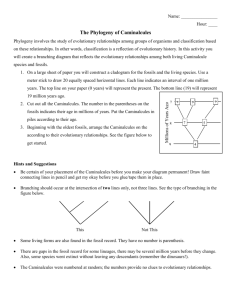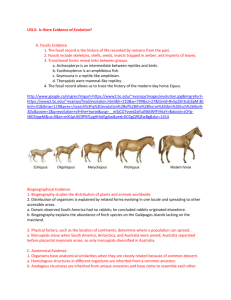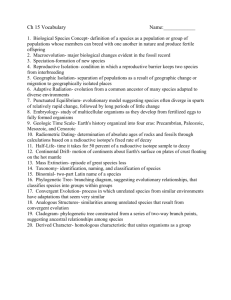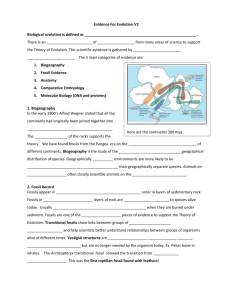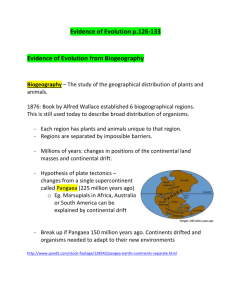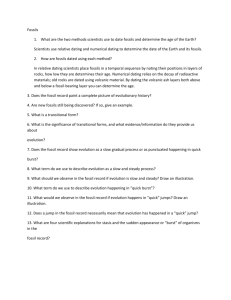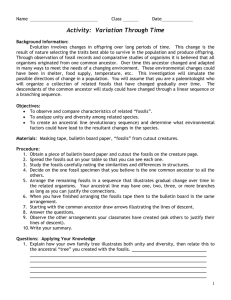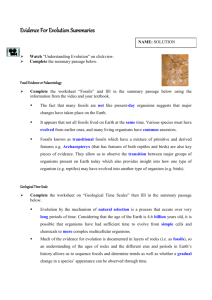Sources of Evidence for Evolution (8.2) Read Section 8.2 (pages
advertisement
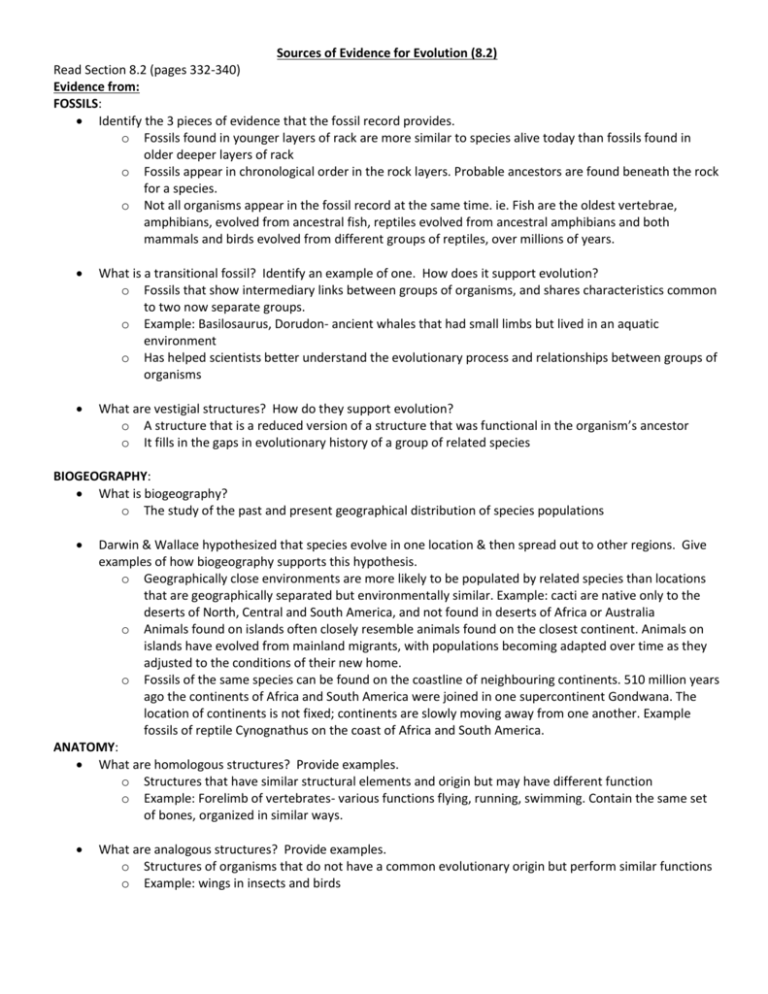
Sources of Evidence for Evolution (8.2) Read Section 8.2 (pages 332-340) Evidence from: FOSSILS: Identify the 3 pieces of evidence that the fossil record provides. o Fossils found in younger layers of rack are more similar to species alive today than fossils found in older deeper layers of rack o Fossils appear in chronological order in the rock layers. Probable ancestors are found beneath the rock for a species. o Not all organisms appear in the fossil record at the same time. ie. Fish are the oldest vertebrae, amphibians, evolved from ancestral fish, reptiles evolved from ancestral amphibians and both mammals and birds evolved from different groups of reptiles, over millions of years. What is a transitional fossil? Identify an example of one. How does it support evolution? o Fossils that show intermediary links between groups of organisms, and shares characteristics common to two now separate groups. o Example: Basilosaurus, Dorudon- ancient whales that had small limbs but lived in an aquatic environment o Has helped scientists better understand the evolutionary process and relationships between groups of organisms What are vestigial structures? How do they support evolution? o A structure that is a reduced version of a structure that was functional in the organism’s ancestor o It fills in the gaps in evolutionary history of a group of related species BIOGEOGRAPHY: What is biogeography? o The study of the past and present geographical distribution of species populations Darwin & Wallace hypothesized that species evolve in one location & then spread out to other regions. Give examples of how biogeography supports this hypothesis. o Geographically close environments are more likely to be populated by related species than locations that are geographically separated but environmentally similar. Example: cacti are native only to the deserts of North, Central and South America, and not found in deserts of Africa or Australia o Animals found on islands often closely resemble animals found on the closest continent. Animals on islands have evolved from mainland migrants, with populations becoming adapted over time as they adjusted to the conditions of their new home. o Fossils of the same species can be found on the coastline of neighbouring continents. 510 million years ago the continents of Africa and South America were joined in one supercontinent Gondwana. The location of continents is not fixed; continents are slowly moving away from one another. Example fossils of reptile Cynognathus on the coast of Africa and South America. ANATOMY: What are homologous structures? Provide examples. o Structures that have similar structural elements and origin but may have different function o Example: Forelimb of vertebrates- various functions flying, running, swimming. Contain the same set of bones, organized in similar ways. What are analogous structures? Provide examples. o Structures of organisms that do not have a common evolutionary origin but perform similar functions o Example: wings in insects and birds EMBRYOLOGY: Describe how evidence from embryology can be used to determine evolutionary relationships between animals. o Similarities in embryonic structure can indicate common ancestral origin of species o Example- all vertebrates have very similar embryonic structure (all vertebrates have paired pouches) DNA: How is DNA used to describe evolutionary relationships? o It allows scientist to show relatedness between organisms where there is no other method to indicate they had a common ancestor. o Example: dogs are related to bears; whales and dolphins are related to ungulates Read p339-which modern day animal is the T.rex probably related to? Identify the evidence to support this hypothesis. Evidence Earliest birds had feet similar to dinosaur feed Dinosaur fossils show evidence of feathers Molecular similarity between chicken tissue and dinosaur tissue Amino acid sequence in chickens shows a clear ancestral link between chickens and dinosaurs P340 Q’s #1, 5, 6, 10,11,

